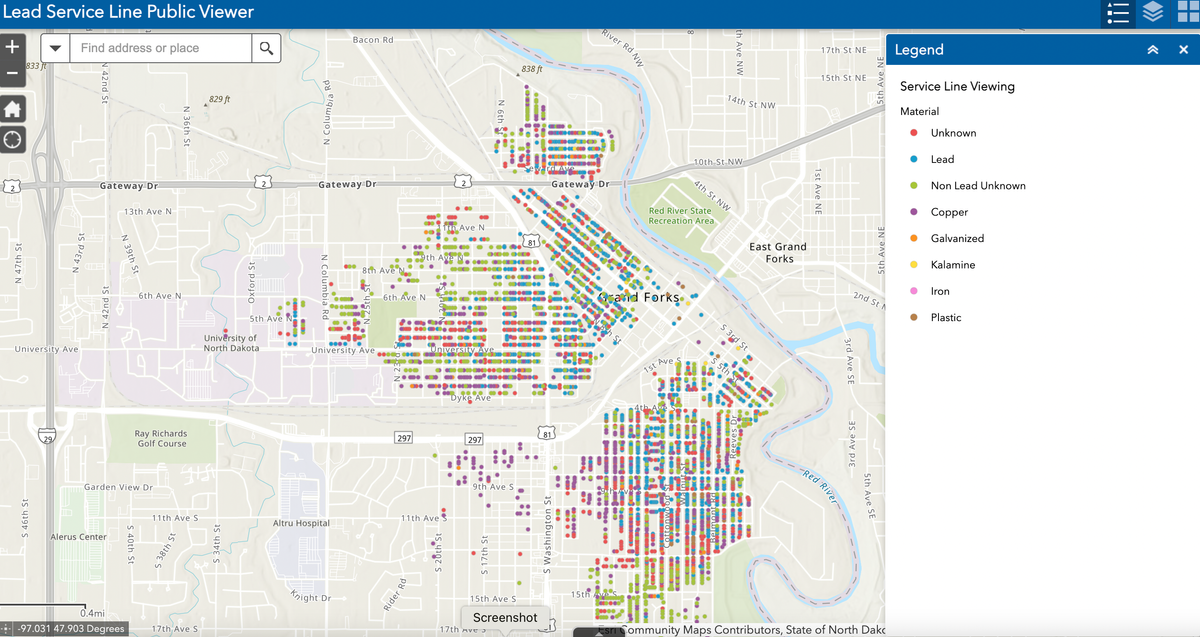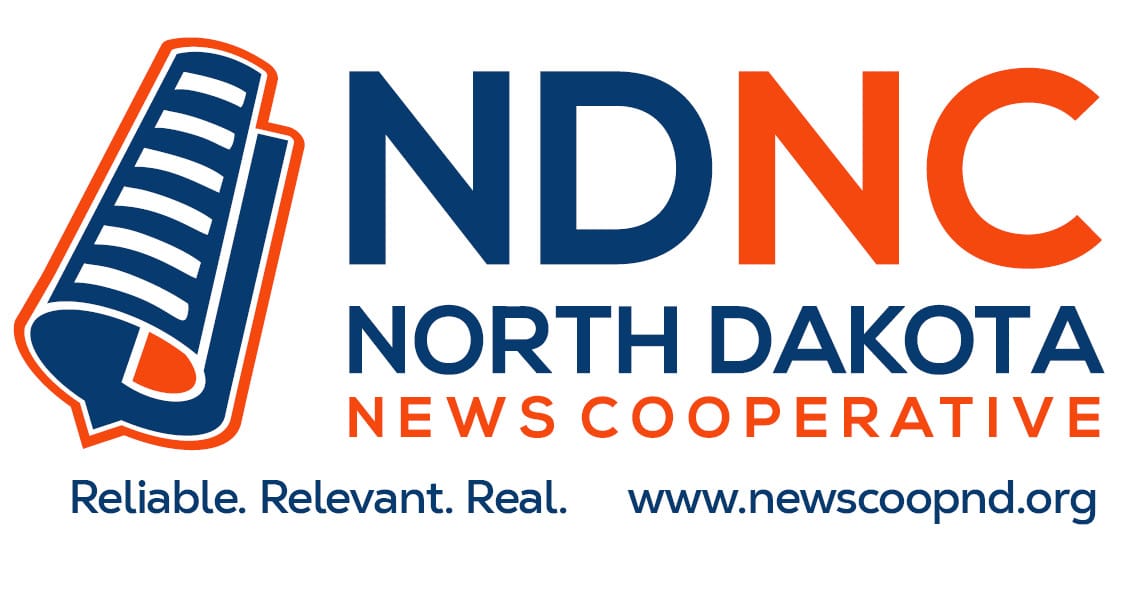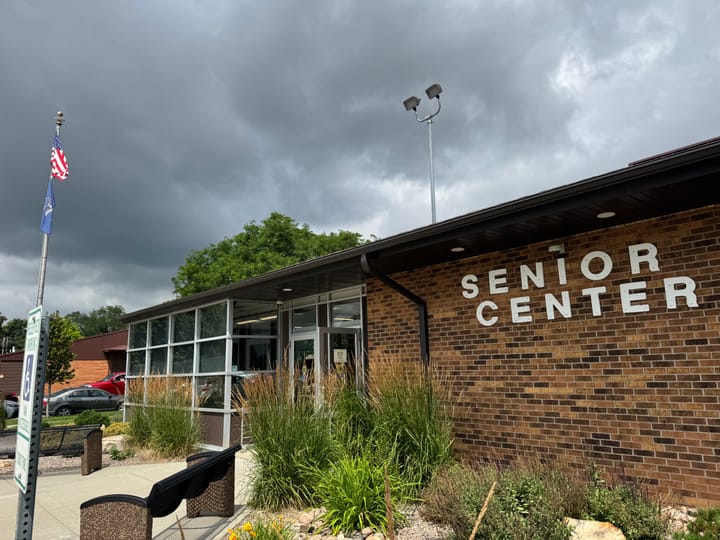State needs citizen help to get the lead out
Lead service lines replacement started; schools, child care facilities not prioritized

Like all states, North Dakota has been in the process of gathering records from municipal water systems and information from citizens about whether old lead service lines bring drinking water to homes.
This is part of a process of implementing the latest Environmental Protection Agency (EPA) rules on lead in service lines. The rules aim to protect people from exposure to lead in drinking water in their homes from pipes directly connected to municipal water sources before lead was banned in the 1986 Safe Drinking Water Act.
Exposure to lead at an early age or within the womb has been shown to cause a range of serious health impacts, including irreversible effects on brain development in children.
This means higher rates of ADHD and behavioral issues that have impacts later in life, including delinquent, antisocial and criminal behavior, according to recent studies.
“Young children, because they’re growing so fast, the need for minerals and vitamins, their intake is very high,” said Sandra Washek, N.D. Department of Environmental Quality (DEQ). “The more you’re exposed to it, the more you suck it in.”
Around $25 million in federal funding has come to North Dakota’s state revolving fund this year to help cover the costs to replace those lines. Nationally, $15 billion of Bipartisan Infrastructure Law funding has been invested to identify and replace lead service lines.
North Dakota receives approximately $28 million per year over five years for the program, with the first disbursement of $20 million coming in 2022.
Identifying the problem
According to DEQ, a total of 5,170 lead service lines in North Dakota had been identified by mid-November and will need to be replaced. Another 430 galvanized lines previously connected to lines containing lead where lead deposits have formed will also need replacement.
With another 124,014 lines, however, it is unknown whether lead exists in those lines and could take resident reporting to discover the true number.
Altogether, there are 276,390 lines identified in the 310 public water systems across the state.
The EPA estimates over 22,000 lead service lines exist in the in North Dakota, according to a Freedom of Information Act request from the environmental law nonprofit Natural Resources Defense Council (NRDC) that covered all states.
By comparison, Minnesota’s estimates are for around 360,000 lines, South Dakota over 7,000, and Montana over 10,000.
DEQ has been working to understand the 800 plus pages of EPA rules on lead and copper lines to help public water systems comply.
Officials say more help from residents is needed to narrow down the number of unknown lines.
“We got round two, three and four of this inventory coming. So, if (water authorities) are out there, and if they're being asked on these surveys, being knocked on the door and stuff, please help these engineers and the public works people do this,” Washek said. “Because if we can downsize those unknowns, and their line is non-lead, we can remove them off the list.”

Replacement will come with some costs to homeowners, however, with bills up to around $2,000, depending on how extensive the replacement is.
“Some cities are assessing those costs so they can be spread out over a longer period of time,” said Shannon Fisher, who is managing the program funds for DEQ. “A lot of homeowners, even if it’s $2,000 or whatever, that’s still a lot.”
Fisher said some municipalities are considering capping the costs for homeowners, contributing their own funds in addition to the federal money.
So far, Bismarck and Grand Forks have started replacing lead service lines, while Fargo and Dickinson are likely to start replacement in the near future, according to DEQ. Waiting lists have grown already in areas where replacement is underway, however, since the number of contractors is limited.
Grand Forks started its replacements in 2022, following the lead of Bismarck. A total of 51 homes have been scheduled for replacements, but challenges include cost and contractor availability, said Melanie Parvey, the city’s water director.
A total of around 1,000 lead service lines have been identified in Grand Forks, and another 700 are unknown.
Parvey estimates replacement costs of $7,000 to $12,000 per line, with the portion borne by homeowners now capped at $1,000.
Outreach, which has included postcards and letters, has yielded only a 10% response rate.
“I think reaching each and every household is just a challenge,” Parvey said.
The city has also advanced its meter replacement project, which will allow engineers the ability to check lines as meters are swapped.
“I think the biggest thing is we're willing to come out and help them figure out what they've got,” Parvey said. “We don't charge anybody. We just come out and meet with them and help them figure out if it is a lead service line, and then if it is, we've got some funding, so we can help them if they have an interest.”
Schools, child care facilities not yet tested
Separate from the lead service line replacement, but potentially as important, is a program for schools and child care facilities to check for lead pipes and fixtures in their water systems.
DEQ offers a lead hazard survey for any school to voluntarily check for lead levels, with federal grant funding available since 2017 to help pay for sampling and testing.
However, schools – and later child care facilities – faced a number of disincentives in going forward with testing and potential remediation.
If they did choose to test, they’d have to set up a website and hold meetings to educate staff and parents. If testing found a problem, they’d have to fix it themselves, Washek said.
Only one school in the state started its application process for testing water systems, Washek said, and a handful looked at testing lead paint, but no schools ever went through the full process.
“We had funding, but no one wanted it,” Washek said. “We had some surveys sent back to us on lead paint, but we’d ask, ‘Did you turn around and do this? Did you do this?’ … stuff like that. They sent it back, but a lot of them weren’t interested in testing.”

Under the new EPA lead and copper rule improvements, public water systems will be mandated to test schools and child care facilities once it goes into full effect in the state and within the next ten years.
Currently, only 10 states have requirements for mandatory testing at schools and child care facilities, including neighboring Minnesota. Another nine states had mandatory testing rules, but these expired and were replaced by voluntary reporting systems.
The new EPA rules will eventually trigger public water systems in North Dakota to offer yearly testing, first at kindergarten and elementary schools since they’re at higher risk, then child care facilities, whether they’re in-home or stand alone, unless a building was constructed after the lead ban in the 1980s, Washek said.
Washek hasn’t seen much activism by parents pushing for testing at schools, but has seen some from parents living in rental units where children have tested for higher levels of lead in their blood.
Erik Olson, senior strategic director for health at the NRDC, said it is important for parents to take an active role in pushing for schools to test or potentially offer other solutions to make drinking water safe.
“A lot of parents aren’t aware that when you do the testing, in virtually every school that’s been tested anywhere in the country, you end up finding lead,” Olson said. “I think a lot of parents aren’t aware and would be very concerned if they learned that.”
Michigan, which has had major problems with lead, including finding high lead exposure in around 100,000 residents in Flint a decade ago, has recently adopted a policy to “filter first” instead of simply ripping out and replacing systems where lead is found.
The Michigan policy calls for providing one filtered drinking water station per 100 students in public schools in the state.
Olson said the cost versus benefits are much greater with filtering than replacement. Good filtration catches all lead, even what might be missed during a replacement.
Over 10 years, filtering in Michigan schools would cost around $166 million compared to testing and fixing water lines, which is estimated to cost upward of $497 million, NRDC estimates.
“So it's basically a filtration station. You can fill your water bottle or you can drink from the fountain. It filters out all the lead,” Olson said. “You know the kids are getting lead free water and you don't have to spend all your money ripping out pipes, and you don't have to spend all your money retesting and testing constantly, and you immediately know that the kids are getting safe water.”

The North Dakota News Cooperative is a nonprofit news organization providing reliable and independent reporting on issues and events that impact the lives of North Dakotans. The organization increases the public’s access to quality journalism and advances news literacy across the state. For more information about NDNC or to make a charitable contribution, please visit newscoopnd.org. Send comments, suggestions or tips to michael@newscoopnd.org. Follow us on Twitter: https://twitter.com/NDNewsCoop.



